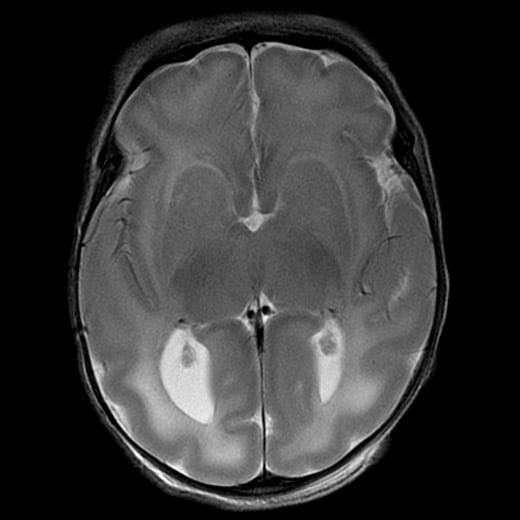Patient was a young adult working in finance at a major tech company found to be mute and diaphoretic.
Physical exam notable for fever, tachycardiac, hypertension, awake but not following commands, aphasic, and with hyperreflexia and muscle ridigity. CK peaked to 11,344.
MRI shows multiple ovoid to splotchy confluent lesions in the white matter with diffusion restriction. Lesions also enhanced with hyperperfusion (not shown).
Urine drug test positive for cocaine. Infectious work-up was negative. Steroids were started with good recovery.
Patient denied knowingly taking cocaine but did say weekly use of what they thought was MDMA with friends…
Final diagnosis: Levamisole-induced leukoencephalopathy. Levamisole is an antiparasite medication that is no longer used in the US but still in some other countries. It is a common cutting agent in cocaine. It’s neurotoxic effects primarily come from causing demyelination.


Actually i think its quite refreshing to see some actual scientific terminology and many laymen questions could easily be answered in the comments rather then adapting the post to visitors.
On point 2. It may have been my bad, i think i misread “my roommate” sorry for misunderstanding.
I think the sincerity is proof enough that your willing to follow and respect the patiënt and privacy laws. I fully agree that the text is not very identifying.
I have however grown increasingly aware of traceability on the web and how much easiers computers can detect obscure identifiers almost invisible to humans.
One of the things that worry me is how identifying currently non identifying pictures can be. Bodies are unique both out and inside, for all we know we can reconstruct the shape of ones head and face with just a few of these in just a few years.
I feel rather conflicted about it because on one side i am all for the free flow and sharing of scientific information because the more accessible learning new things becomes the better of we will all be. On the other if i learned my dr posted a picture of just my toe nail online for any reason but without asking me. I’d feel rather violated.
What definitely accelerated my worry here was my misunderstanding on your relation with the patient because what i have seen before is people who are not online becoming identifiable over time as a “friend/acquaintance/other” simply mentiones innocent things like “went to dinner with x last night” and in a picture a menu is shown with the name of a local restaurant.
May look far fetched and i admit i am personally maybe a bit overly aware of these risks. But people can be real creeps and so are data harvesting companies.
I think these are valid concerns, once again, and must be discussed and hashed out so that everyone is on the same page.
The medical field has a long history of sharing cases for education, and I would say radiology definitely is one of the fields where this is done more often than not, due to the complexity of cases, use of imaging, which is a format that makes it easier to share. I would also say that radiology is quicker to embrace new technologies, including use of the internet and social media, due to reliance on technology to begin with. For example, you can find on twitter, of all places, many case presentations and discussions, many by prominent leaders in the field. Almost all the major radiology societies have some case series for perusal, there’s Radiopaedia as I already mentioned, and the largest community I’m aware of is r/radiology, which I modeled this community after.
I understand there’s a slippery slope between posting educational content and entertainment content. I intend to firmly keep us away from the entertainment side. While I do not want this community to fall into a somber tone, I will not tolerate posts or comments intended to mock or demean a case/patient.
In regards to data harvesting - interesting thought. I had to dig a little bit. There’s definitely been some publications that deal with large medical imaging datasets wherein AI was able to use the high resolution imaging to identify patient features, including 3D reconstruction of the face from the data. The images posted here are: 1) regular .jpgs and not high resolution files like dicom, 2) limited to a couple of images when a full CT can be in the hundreds, and 3) been through photoshop, powerpoint, possibly multiple saves though jpg with degradation each time, or they’re crappy phone camera images of a medical image. I can’t say the risk is absolutely 0, but it’s pretty close - by staying within medical privacy laws and avoiding super rare presentations of things.
However, your concerns have been my concerns too, so I have also reached out to the .world admins for their thoughts. Perhaps they don’t feel comfortable hosting this type of content, or would like to see some other assurances. I will find out and proceed from there.